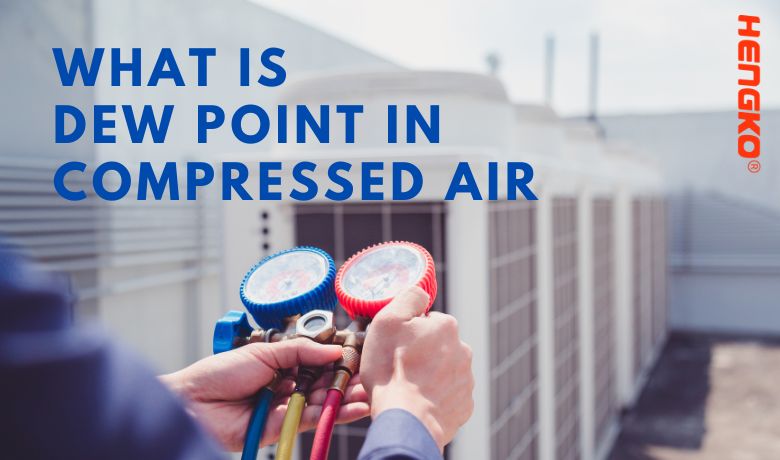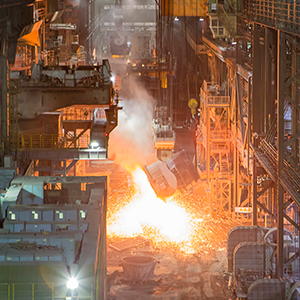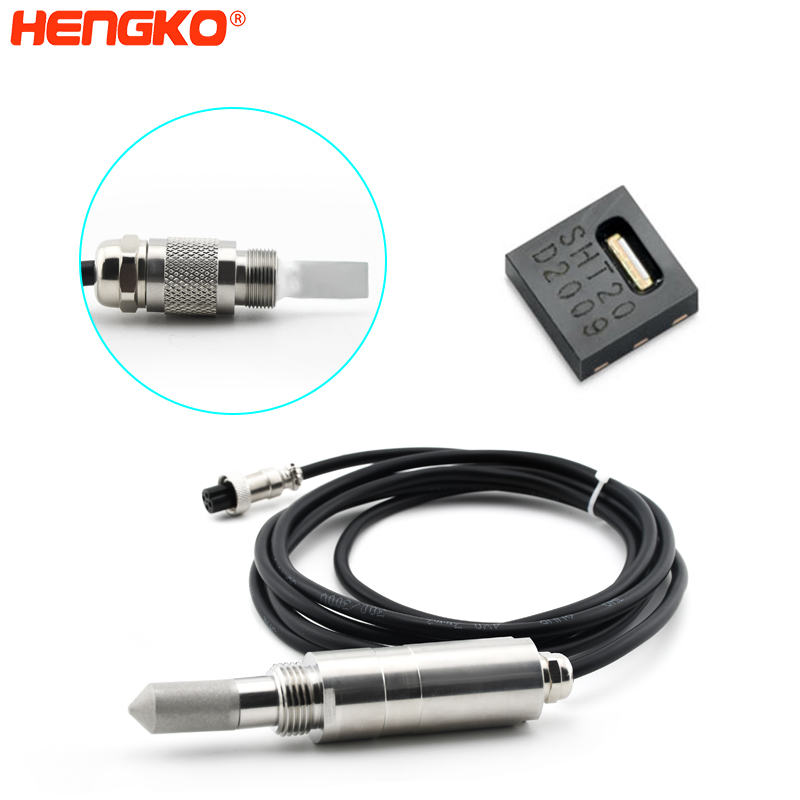What is Dew Point in Compressed Air

Compressed air is regular air, the volume of which has been decreased with the help of a compressor. Compressed air, just like regular air, consists mostly of hydrogen, oxygen and water vapor. Heat is generated when the air is compressed, and the pressure of the air is increased.
Where is Compressed Air?
Compressed air is widely used in various industrial processes, from power tools and machines to packaging and cleaning operations. However, it is often overlooked that the quality of compressed air is critical to the performance and reliability of these applications. One aspect that deserves particular attention is the dew point of compressed air, which measures the moisture level in the compressed air. This blog will explore the importance of measuring the dew point in compressed air and why it is essential for maintaining optimal performance and efficiency.
Why and How do We Dry Cmpressed Air?
Atmospheric air contains more water vapor at high temperatures and less at lower temperatures. This has an effect on the water concentration when the air is compressed. Problems and disturbances can occur due to water precipitation in the pipes and connected equipment. To avoid this, the compressed air must be dried.
What is Dew Point?
The dew point is the temperature at which moisture in the air condenses into visible water droplets. When air is compressed, its temperature rises, reducing relative humidity and increasing the moisture-holding capacity. However, if the compressed air cools down, the excess moisture can condense and form liquid water, leading to corrosion, contamination, and reduced efficiency of the compressed air system. Therefore, controlling the dew point of compressed air is essential for ensuring the quality and reliability of the system.
Why is Dew Point Important in Compressed Air?
Controlling the dew point of compressed air is essential for many reasons, including:
1. Protecting Equipment and Processes
Excess moisture in compressed air can cause many problems, including corrosion, rust, and damage to pneumatic components. Moisture can also cause contamination in sensitive processes, such as food and beverage production, pharmaceuticals, and electronics manufacturing. These risks can minimize by measuring and controlling the dew point of compressed air, and the longevity and reliability of equipment and processes can easily improve.
2. Ensuring the Quality of End Products
In industries such as food and beverage, pharmaceuticals, and medical devices, the quality of the end product is directly affected by the quality of the compressed air used in the production process. Moisture and contaminants in compressed air can cause spoilage, bacterial growth, and other quality issues. Controlling the dew point of compressed air can mitigate these risks, and the quality of the end product can ensure.
3. Improving Energy Efficiency
Excess moisture in compressed air can also reduce the system's energy efficiency. When air is compressed, the energy used to compress the air is converted into heat, and the compressed air's temperature rises. If the compressed air is not adequately dried, the heat generated during compression will evaporate the moisture in the air, reducing the system's efficiency. By measuring and controlling the dew point of compressed air, the system's energy efficiency can be improved, reducing energy costs and minimizing the carbon footprint.
4. Meeting Industry Standards and Regulations
Many industries have specific standards and regulations for the compressed air quality used in their processes. For example, the International Organization for Standardization (ISO) has published ISO 8573, which defines the purity classes of compressed air based on the concentration of contaminants, including moisture. By measuring and controlling the dew point of compressed air, industries can ensure that their compressed air systems meet these standards and regulations, avoiding costly penalties and legal issues.
Why Measure the Dew Point in Compressed Air?
Measuring the dew point in compressed air is essential for several reasons:
-
Protecting Equipment and Processes
Excess moisture in compressed air can cause corrosion and damage to equipment, leading to costly repairs and downtime. Moisture can also cause problems in sensitive processes, such as electronics manufacturing, where moisture can cause damage to sensitive components.
So you can check the moisture content can be controlled by measuring the dew point in compressed air, protecting equipment and processes from damage, and ensuring product quality.
-
Ensuring Product Quality
Product quality is paramount in industries such as food and beverage production and pharmaceutical manufacturing. Contamination from moisture in compressed air can lead to costly recalls and harm to consumers.
This way, moisture content can be easily controlled by measuring the dew point in compressed air, ensuring product quality and safety.
-
Improving Energy Efficiency
Excess moisture in compressed air can reduce energy efficiency by causing air compressors to work harder to maintain the desired pressure. It can lead to increased energy consumption and higher operating costs.
Energy efficiency can be improved by measuring the dew point in compressed air and controlling the moisture content, resulting in cost savings and increased sustainability.
Choosing the Right Method for Dew Point Measurement
Choosing the right method for dew point measurement depends on the application, accuracy required, and budget. Electronic sensors are the most popular and cost-effective method for measuring the dew point in compressed air and are suitable for most applications. However, a chilled mirror device may be the best choice if high accuracy is required or if compressed air is used in sensitive processes.
How to Measure Dew Point in Compressed Air?
Measuring the dew point in compressed air is a relatively simple process that can be done using various methods, including:
-
Electronic Sensors
Electronic dew point sensors use a sensing element to detect the moisture in compressed air and convert it into an electrical signal. The signal is then sent to a controller or display unit, which provides a readout of the dew point. Electronic sensors are highly accurate and reliable and can be used in various applications.
-
Chemical Desiccants
Chemical desiccants, such as silica gel, can be used to measure the dew point of compressed air. The desiccant is exposed to compressed air and the color of the desiccant changes based on the level of moisture present. The color change can match a chart or scale to determine the dew point of the compressed air.
-
Chilled Mirror Devices
Chilled mirror devices use a highly accurate and reliable method to measure the dew point of compressed air. A mirror is cooled to a temperature below the expected dew point, and the compressed air is passed over the mirror's surface. As the air cools, the moisture in the air condenses onto the mirror's surface, causing it to fog up. The mirror's temperature is then measured, accurately measuring the dew point.
-
Capacitive Sensors
Capacitive sensors measure the dielectric constant of the compressed air, which is related to the level of moisture present. The sensor consists of two electrodes separated by a dielectric material: compressed air. As the moisture content of the air changes, the dielectric constant also changes, providing a measurement of the dew point.
Choosing the right method for measuring the dew point in compressed air depends on various factors, including the accuracy and reliability required, the application, and the budget. Electronic sensors are the most popular choice due to their ease of use and accuracy, while chilled mirror devices are the most accurate but also the most expensive.
HENGKO RHT-HT-608 industrial high pressure dew point transmitter, simultaneous calculation of dew point and wet bulb data, which can be output through the RS485 interface; Modbus-RTU communication is adopted, which can communicate with PLC, man-machine screen, DCS and various configuration software are networked to realize temperature and humidity data collection.
What is Pressure Dew Point?
The dew point of compressed air can be defined as the temperature at which water vapor suspended in the air can start condensing into liquid form at an equal rate as it is evaporating. This fixed temperature is the point at which the air is fully saturated with water and can no longer hold any more vaporized water except some of the vapor it contains condenses.
Contact us online today for more information on how our product can optimize your compressed air processes.
Why Choose Dew Point Transmitter from HENGKO?
HENGKO is a reputable manufacturer of high-quality dew point transmitters widely used in various industries worldwide. Here are some reasons why you should consider choosing HENGKO's dew point transmitter:
1. Accurate and reliable measurements:
HENGKO's dew point transmitter uses advanced sensing technology that provides accurate and reliable dew point measurements even in harsh and challenging environments.
2. Wide measuring range:
HENGKO's dew point transmitter can measure dew points from -80℃ to 20℃, making it suitable for a wide range of applications.
3. Fast response time:
HENGKO's dew point transmitter has a fast response time, providing real-time data for immediate action.
4. Easy to install and use:
HENGKO's dew point transmitter is easy to install and use, with a user-friendly interface allowing easy calibration and adjustment.
5. Durable and robust design:
HENGKO's dew point transmitter is made of high-quality materials, ensuring durability and robustness even in harsh environments.
6. Cost-effective:
HENGKO's dew point transmitter is a cost-effective solution that provides accurate and reliable dew point measurements at an affordable price.
7. Customizable options:
HENGKO's dew point transmitter is customizable, allowing specific requirements and applications to be met.
In summary, HENGKO's dew point transmitter is reliable, accurate, and cost-effective for measuring dew points in compressed air systems. With its advanced sensing technology, wide measuring range, fast response time, and customizable options, HENGKO's dew point transmitter is an excellent choice for various industries requiring precise and reliable measurements.
If you want to ensure the quality and reliability of your compressed air systems, it is essential to measure the dew point. HENGKO's dew point transmitter is reliable, accurate, and cost-effective for measuring dew points in compressed air systems. Don't compromise on the quality and reliability of your compressed air systems. Choose HENGKO's dew point transmitter today! Contact us to learn more and request a quote.


